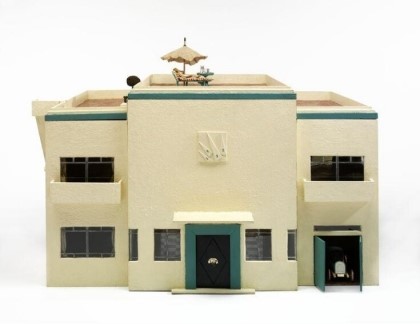Last winter The Giant Dolls’ House project held a workshop at the Building Centre where participants made dolls’ houses to tell their stories in miniature. Their dolls’ houses have formed an installation which was part of Shaping Space – Architectural Models Revealed, an exhibition co-curated with the V&A Research Institute.
Some of the families who participated were seeking asylum in the UK and came to the workshop with volunteers from Care4Calais. Other participants included architects, architecture students, a grandmother with her grandchild, and a teacher, all from the UK. The installation showed that all of us have our own story, which doesn’t necessarily define who we are.
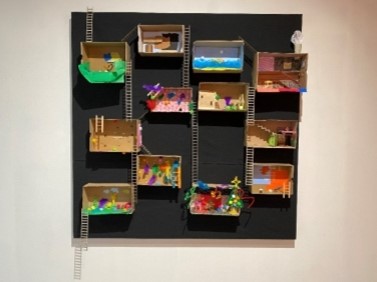
In their own words, participants described their dolls’ houses and what they associate with them:
I have chosen coloured pompoms to create my box. I also made a heart on the wall and glued some beads like the ones my mum used to make a bracelet for me.
Sida, 7 years old
I like the garden because I can rest in it and feel relaxed. Sitting in the garden is a way of disconnecting.
Hero, 30 years old
This is a dream house where all dreams are real. Whatever you dream at night in this house will be reality the next day. So be careful and have good dreams only!
Manuel, 42 years old
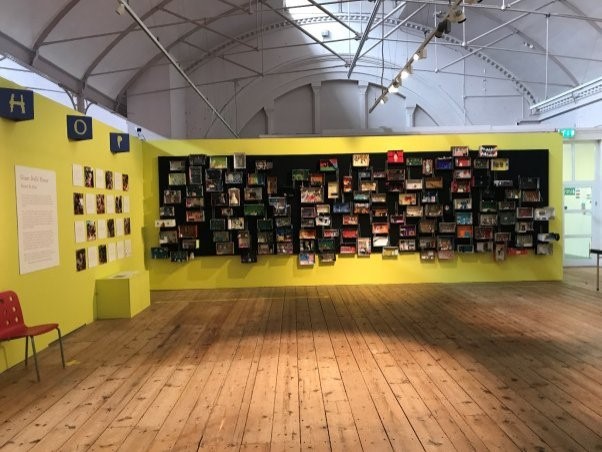
The Giant Dolls’ house project is a social arts project. We ask participants to engage with ideas of home and surroundings through making a dolls’ house in a shoebox accompanied by a short explanatory text. Participants are free to do as they like in their box, as one should be in one’s home.
The dolls’ house boxes are then mounted on to a black canvas and connected with ropes, ramps and ladders to form a community: ‘a Giant Dolls’ house.’ The ladders lead the eye from box to box, showing that we can all be connected into a larger story. Storytelling events are organised around the installations, online as well as in real life. We have found that working in miniature can help address difficult or emotional topics in a non-threatening manner.
So far the project has travelled to Jordan, India, Dubai and the US as well as locations across the UK.It has collaborated with charities Oxfam GB and Shelter and has been part of the London Festival of Architecture and Refugee Week to show the importance of a home and community for all.
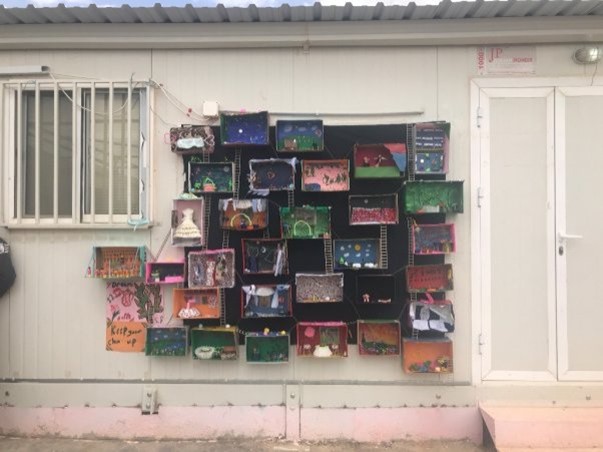
Together, we care
During Refugee Week 2020 and 2021, the Covid-19 lockdown meant that we had to take our project online. We asked participants to make a dolls’ house, take a picture and post it to our website with a story. We all felt what it was like to not see your family. We received over 400 stories and boxes which can still be seen on our website in a special booklet
What would your dolls’ house look like?
Dolls’ houses are a great medium to explore ideas in three dimensions and in miniature. If you would like to have a go at making a dolls’ house you can get some ideas on the Giant Dolls’ House making page. You can then upload a picture of your creation to the website or you can tag @giantdollshouse if you post a picture on social media.
Inspiration in the V&A Collection
When making your dolls’ house, you can find inspiration in the V&A’s collection. The power attributed to making things in miniature can be traced through the ages. Buddhist monks in the 9th century carried votive seals with images carved onto them to give as offerings. Netsukes were toggles made in Japan with the practical purpose of attaching satchels or pouches, but were often made in the shape of mythical creatures or beasts. Working in miniature, as these examples show, required exquisite craftsmanship.
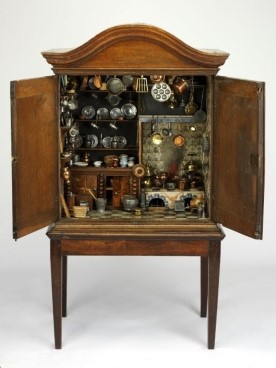
Dolls’ house interiors are like small stage sets where a story can take place. Old dolls’ houses, called babyhouses, were for adults not children. Some were precious collectors’ items. Others were designed to teach you how to run a household. They are therefore a valuable source to show us the layouts of houses that have long been lost.
In the 17th century in the Netherlands people collected miniatures of household items, initially made in silver, which they placed in boxes that became ‘rooms’ or were assembled into precious miniaturised cabinets. The urge to make a model of one’s contemporary world continued through the centuries. It can also be seen in the Whiteladies house which shows life in the early 20th century, in an art deco home.
